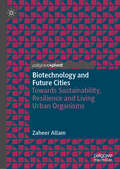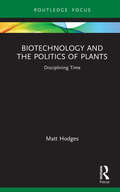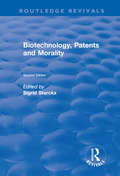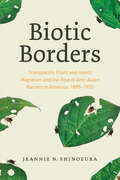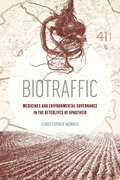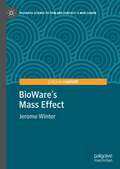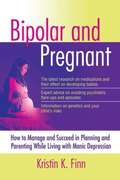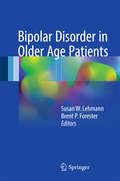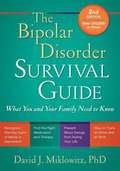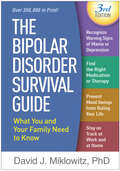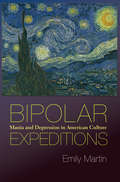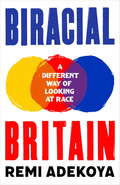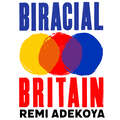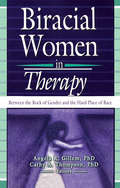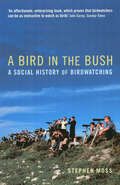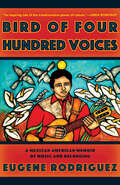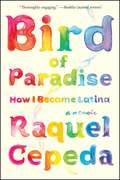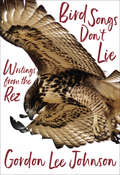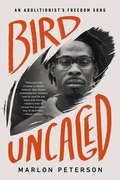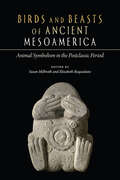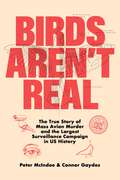- Table View
- List View
Biotechnology and Future Cities: Towards Sustainability, Resilience and Living Urban Organisms
by Zaheer AllamThis book explores how biotechnology can lead to the reimagination of cities. In a time where the increasing adoption of technology by cities is leading to unsustainable environmental and economic concerns, biotechnology has enabled new ways of envisioning data and energy storage. Zaheer Allam thus revisits the popular concept of Smart Cities -and its associated Internet of Things (IoT) to explore how the biological sciences, coupled with technology, can be applied to cities; and in doing so, create living urban organisms on an unprecedented scale. This new concept will open up exciting avenues to providing novel solutions for climate change mitigation. The book goes on to address various potential concerns and discusses what regulatory frameworks would be needed to safely implement such a concept. It will be a useful tool for planners, policy makers and engineers as well as for researchers with in interest in the future of our cities.
Biotechnology and the Politics of Plants: Disciplining Time (Routledge Focus on Anthropology)
by Matthew HodgesBiotechnology and the Politics of Plants explores the mysterious phenomenon of ‘apomixis’, the ability of certain plants to ‘self-clone’, and its potential as a revolutionary tool for agriculture and enhancing food security, that may soon be a reality. Through historical anthropological and ethnographic study, Matt Hodges traces the development of the CIMMYT Apomixis Project, a prominent frontier research initiative, and its reinvention as a leading public-private partnership. He analyzes the fast-moving historical transition from public sector, mixed plant breeding approaches grounded in genetics, to a contemporary era of agricultural biotechnology and genomics where PPPs are a leading format, and explores how social contexts of research shape how knowledge is produced, as well as what remains ‘unknown’, and constrain the development of an ‘Apomixis Technology’. The chapters present an inventive approach informed by the anthropology of time, science and technology studies, and dialogue with the work of Gilles Deleuze, Paul Rabinow, Hannah Arendt, Andrew Pickering, and Eduardo Viveiros de Castro. Hodges outlines novel ways of integrating notions of history and becoming, and considers how apomixis offers up an alternative image of thought to theoretical concepts such as the well-known ‘rhizome’. The book makes a valuable contribution to both the growing social scientific literature on genomics and biotechnology, and recent anthropological debates on time and history.
Biotechnology, Patents and Morality (Routledge Revivals)
by Sigrid SterckxThis title was first published in 2000. This work documents an international and interdisciplinary workshop on the ethical aspects of the patenting of biotechnological inventions, including genes, plants and animals. The public perception is discussed, along with how these perceptions relate to ethical, social and cultural factors. The legal framework in Europe is laid out by several experts in the field of patent law and the situation in the US is also briefly described. This edition also includes a general discussion of three important theories called upon to justify the patent system: the natural rights argument; the distributive justice argument; and the utilitarian argument. The chapter about the European Directive on the legal protection of biotechnological inventions has been updated. A selection of provisions from the August 1997 draft as well as the final text of the Directive, as adopted on 12 May, 1998, are discussed and commented upon. The patent provisions of the TRIP's Agreement (the Agreement on Trade Related aspects of Intellectual Property rights, concluded in 1994 as an Annex to the Agreement Establishing the World Trade Organization) are also discussed and criticized, paying particular attention to the implications for biotechnology patents. Finally, the question is asked whether the developing countries stand to gain anything from TRIPs. A look at the results of empirical research, conducted by commentators on the economics of patenting, reveals that the new patent regime may prove to entail significant costs for the developing countries. This second edition also contains material on the EU Directive on biotechnology patents adopted in May 1998, justificatory theories of the patent system and the TRIP's agreement on Trade Related aspects of Intellectual Property rights, concluded in the GATT (WTO) framework.
Biotic Borders: Transpacific Plant and Insect Migration and the Rise of Anti-Asian Racism in America, 1890–1950
by Jeannie N. ShinozukaA rich and eye-opening history of the mutual constitution of race and species in modern America. In the late nineteenth century, increasing traffic of transpacific plants, insects, and peoples raised fears of a "biological yellow peril" when nursery stock and other agricultural products shipped from Japan to meet the growing demand for exotics in the United States. Over the next fifty years, these crossings transformed conceptions of race and migration, played a central role in the establishment of the US empire and its government agencies, and shaped the fields of horticulture, invasion biology, entomology, and plant pathology. In Biotic Borders, Jeannie N. Shinozuka uncovers the emergence of biological nativism that fueled American imperialism and spurred anti-Asian racism that remains with us today. Shinozuka provides an eye-opening look at biotic exchanges that not only altered the lives of Japanese in America but transformed American society more broadly. She shows how the modern fixation on panic about foreign species created a linguistic and conceptual arsenal for anti-immigration movements that flourished in the early twentieth century. Xenophobia inspired concerns about biodiversity, prompting new categories of “native” and “invasive” species that defined groups as bio-invasions to be regulated—or annihilated. By highlighting these connections, Shinozuka shows us that this story cannot be told about humans alone—the plants and animals that crossed with them were central to Japanese American and Asian American history. The rise of economic entomology and plant pathology in concert with public health and anti-immigration movements demonstrate these entangled histories of xenophobia, racism, and species invasions.
Biotic Borders: Transpacific Plant and Insect Migration and the Rise of Anti-Asian Racism in America, 1890–1950
by Jeannie N. ShinozukaA rich and eye-opening history of the mutual constitution of race and species in modern America. In the late nineteenth century, increasing traffic of transpacific plants, insects, and peoples raised fears of a "biological yellow peril" when nursery stock and other agricultural products shipped from Japan to meet the growing demand for exotics in the United States. Over the next fifty years, these crossings transformed conceptions of race and migration, played a central role in the establishment of the US empire and its government agencies, and shaped the fields of horticulture, invasion biology, entomology, and plant pathology. In Biotic Borders, Jeannie N. Shinozuka uncovers the emergence of biological nativism that fueled American imperialism and spurred anti-Asian racism that remains with us today. Shinozuka provides an eye-opening look at biotic exchanges that not only altered the lives of Japanese in America but transformed American society more broadly. She shows how the modern fixation on panic about foreign species created a linguistic and conceptual arsenal for anti-immigration movements that flourished in the early twentieth century. Xenophobia inspired concerns about biodiversity, prompting new categories of “native” and “invasive” species that defined groups as bio-invasions to be regulated—or annihilated. By highlighting these connections, Shinozuka shows us that this story cannot be told about humans alone—the plants and animals that crossed with them were central to Japanese American and Asian American history. The rise of economic entomology and plant pathology in concert with public health and anti-immigration movements demonstrate these entangled histories of xenophobia, racism, and species invasions.
Biotic Borders: Transpacific Plant and Insect Migration and the Rise of Anti-Asian Racism in America, 1890–1950
by Jeannie N. ShinozukaA rich and eye-opening history of the mutual constitution of race and species in modern America. In the late nineteenth century, increasing traffic of transpacific plants, insects, and peoples raised fears of a "biological yellow peril" when nursery stock and other agricultural products shipped from Japan to meet the growing demand for exotics in the United States. Over the next fifty years, these crossings transformed conceptions of race and migration, played a central role in the establishment of the US empire and its government agencies, and shaped the fields of horticulture, invasion biology, entomology, and plant pathology. In Biotic Borders, Jeannie N. Shinozuka uncovers the emergence of biological nativism that fueled American imperialism and spurred anti-Asian racism that remains with us today. Shinozuka provides an eye-opening look at biotic exchanges that not only altered the lives of Japanese in America but transformed American society more broadly. She shows how the modern fixation on panic about foreign species created a linguistic and conceptual arsenal for anti-immigration movements that flourished in the early twentieth century. Xenophobia inspired concerns about biodiversity, prompting new categories of “native” and “invasive” species that defined groups as bio-invasions to be regulated—or annihilated. By highlighting these connections, Shinozuka shows us that this story cannot be told about humans alone—the plants and animals that crossed with them were central to Japanese American and Asian American history. The rise of economic entomology and plant pathology in concert with public health and anti-immigration movements demonstrate these entangled histories of xenophobia, racism, and species invasions.
Biotraffic: Medicines and Environmental Governance in the Afterlives of Apartheid
by Christopher MorrisBiotraffic explores the complex world of biological resource trade. It takes readers inside the contemporary Ciskei region of South Africa, a once-notorious apartheid "homeland" turned extractive hub for wild medicinal plants. Drawing from in-depth ethnographic and archival research, Christopher Morris examines the region’s trade in Pelargonium sidoides, a plant once contested as a tuberculosis treatment in early twentieth-century Europe and now an internationally marketed remedy for the common cold. The story of this trade links past and present, encapsulating a larger tale about colonial legacies and their intersection with global environmental governance ambitions. It also teems with a diverse cast of actors, from plant harvesters and pharmaceutical companies to activist NGOs and the chiefs who have become business partners with multinational drug firms. The book’s analysis extends beyond considering merely the extraction and commercialization of plant resources and offers a critical examination of how demand for therapeutics intertwines with broader struggles over land and political power in South Africa. Biotraffic illuminates how a distance-defying trade is reshaping the sociopolitical landscape of a region—a region grappling with apartheid's afterlives and the challenges of environmental and economic justice.
BioWare's Mass Effect (Palgrave Science Fiction and Fantasy: A New Canon)
by Jerome WinterThe videogame series Mass Effect is a remarkable rarity not only for being an original science-fictional franchise of recent vintage that has risen to such prominent commercial and critical success in popular culture but also for pushing the canonical boundaries of how science fiction as a genre will be experienced and understood in the future. This book analyzes the significance of the game for an understanding of the evolving SF genre and articulates an explanatory framework to limn its landmark reception in videogame history. This book both synthesizes the burgeoning body of scholarship on Mass Effect for a readership unfamiliar with either the game or the critical conversation on its salient importance, while simultaneously, for readers already invested in the science-fiction and videogame scholarship, mounting an extended inquiry as to why Mass Effect has served as such a representative milestone in videogame and genre history. The book should appeal to veteran science-fiction and videogame scholars and students as well as a wide variety of fans, consumers, gamers, and general readers.
Bipolar and Pregnant: How to Manage and Succeed in Planning and Parenting While Living with Manic Depression
by Kristen K. FinnThe first book to tackle one of the leading concerns of women with manic depression and related disorders<P> You have bipolar disorder and want to start a family. There is so much to know and manage when thinking about becoming pregnant and having an optimal pregnancy and postpartum period. What are the risks? Can I go off my meds? How will my partner react? Will my child also become bipolar? How do I navigate through the often confusing and ever-changing research on mental disorders and pregnancy?<P> Kristin K. Finn was diagnosed with manic depression as a teenager. Upon deciding to become pregnant, she and her husband also had questions, concerns, and fears. Recognizing that there was no go-to guide that helps women with manic depression navigate pre-natal, pregnancy, and postpartum issues, Finn collaborated with geneticists, obstetricians, psychologists, and psychiatrists to bring you this ultimate support-group-in-a-book and pregnancy resource.<P> In Bipolar and Pregnant, Finn shares her insights and techniques that she developed through two pregnancies, as well as the advice of her esteemed team of experts. In addition, Bipolar and Pregnant:<P> * Provides information on medical aspects of pregnancy and gives advice on minimizing the risks of psychiatric flare-ups, avoiding episodes, monitoring behavior, and preparing to go off mediation as pregnancy looms.<P> * Discusses medical aspects of pregnancy, preparing for pregnancy, and optimizing the chances of getting pregnant<P> * Provides the latest research on medications used to treat bipolar disorder and their effect on developing babies.<P> You and your entire support team will be armed with the knowledge necessary to help you optimize your pregnancy, subside anxiety, and feel confident that you are doing the very best for you and your new family.
Bipolar Disorder in Older Age Patients
by Susan W. Lehmann Brent P. ForesterThis book provides a comprehensive but practical understanding of the clinical approach to evaluating and caring for older people with bipolar disorder. Aspects of aging that impact the diagnosis, clinical course, and management of bipolar disorder are explained; in particular, attention is drawn to the implications of comorbidities and medical complexity for the psychiatric care of older individuals with the disorder. On the other hand, similarities to treatment in younger patients are also identified. The coverage includes thorough review of current research in the field. Clinical case vignettes are used throughout to highlight practical points, and each chapter includes "clinical pearls" that summarize key points for the clinician. The book closes by examining anticipated research directions and the future needs of this patient population. Bipolar Disorder in Older Age Patients will be an ideal update for the practicing community or geriatric psychiatrist working with older patients with bipolar disorder.
Bipolar Disorder Survival Guide, Second Edition
by David MiklowitzGetting an accurate diagnosis is the first step toward reclaiming your life from bipolar disorder. But if you or someone you love is struggling with the frantic highs and crushing lows of this illness, there are still many hurdles to surmount at home, at work, and in daily life. You need current information and practical problem-solving advice you can count on. You've come to the right place. How can you distinguish between early warning signs of bipolar mood swings and normal ups and downs? What medications are available, and what are their side effects? What should you do when you find yourself escalating into mania or descending into depression? How can you tell your coworkers about your illness without endangering your career? If you have a family member with bipolar disorder, how can you provide constructive help and support? Trusted authority Dr. David J. Miklowitz offers straight talk, true stories, and proven strategies that can help you achieve greater balance and free yourself from out-of-control moods. The updated second edition of this bestselling guide has the latest facts on medications and therapy, an expanded discussion of parenting issues for bipolar adults, and a new chapter, "For Women Only."
The Bipolar Disorder Survival Guide, Second Edition
by David J. MiklowitzGetting an accurate diagnosis is the first step toward reclaiming your life from bipolar disorder. But if you or someone you love is struggling with the frantic highs and crushing lows of this illness, there are still many hurdles to surmount at home, at work, and in daily life. You need current information and practical problem-solving advice you can count on. You've come to the right place. * How can you distinguish between early warning signs of bipolar mood swings and normal ups and downs? * What medications are available, and what are their side effects? * What should you do when you find yourself escalating into mania or descending into depression? * How can you tell your coworkers about your illness without endangering your career? * If you have a family member with bipolar disorder, how can you provide constructive help and support? Trusted authority Dr. David J. Miklowitz offers straight talk, true stories, and proven strategies that can help you achieve greater balance and free yourself from out-of-control moods. The updated second edition of this bestselling guide has the latest facts on medications and therapy, an expanded discussion of parenting issues for bipolar adults, and a new chapter, "For Women Only."
The Bipolar Disorder Survival Guide, Third Edition: What You and Your Family Need to Know
by David J. MiklowitzBipolar disorder is a lifelong challenge--but it doesn't have to rule your life. Find the science-based information you need in the revised third edition of this indispensable guide. Trusted authority Dr. David J. Miklowitz shares proven strategies for managing your illness or supporting a loved one with the disorder. Learn specific steps to cope with mood episodes, reduce recurrences, avoid misdiagnosis, get the most out of treatment, resolve family conflicts, and make lifestyle changes to stay well. Updated throughout, the third edition has a new chapter on kids and teens; the latest facts on medications and therapy, including important advances in personalized care; and expanded coverage of the bipolar II subtype. It features boxes on complementary and alternative treatments and provides downloadable practical tools.
Bipolar Expeditions: Mania and Depression in American Culture
by Emily MartinManic behavior holds an undeniable fascination in American culture today. It fuels the plots of best-selling novels and the imagery of MTV videos, is acknowledged as the driving force for successful entrepreneurs like Ted Turner, and is celebrated as the source of the creativity of artists like Vincent Van Gogh and movie stars like Robin Williams. Bipolar Expeditions seeks to understand mania's appeal and how it weighs on the lives of Americans diagnosed with manic depression. Anthropologist Emily Martin guides us into the fascinating and sometimes disturbing worlds of mental-health support groups, mood charts, psychiatric rounds, the pharmaceutical industry, and psychotropic drugs. Charting how these worlds intersect with the wider popular culture, she reveals how people living under the description of bipolar disorder are often denied the status of being fully human, even while contemporary America exhibits a powerful affinity for manic behavior. Mania, Martin shows, has come to be regarded as a distant frontier that invites exploration because it seems to offer fame and profits to pioneers, while depression is imagined as something that should be eliminated altogether with the help of drugs. Bipolar Expeditions argues that mania and depression have a cultural life outside the confines of diagnosis, that the experiences of people living with bipolar disorder belong fully to the human condition, and that even the most so-called rational everyday practices are intertwined with irrational ones. Martin's own experience with bipolar disorder informs her analysis and lends a personal perspective to this complex story.
Biracial Britain: A Different Way of Looking at Race
by Remi Adekoya'Barack Obama had a special talent for making different kinds of people feel comfortable around him because of his biracial life experience, says Adekoya. By the same token, Adekoya himself seems poised to become one of the most important and subtle new voices in Britain's never-ending conversation about race' David Goodhart, UnherdMixed-race is the fastest-growing minority group in Britain. By the end of the century roughly one in three of the population will be mixed-race, with this figure rising to 75 per cent by 2150. Mixed-race is, quite literally, the future. Paradoxically, however, this unprecedented interracial mixing is happening in a world that is becoming more and more racially polarized. Race continues to be discussed in a binary fashion: black or white, we and they, us and them. Mixed-race is not treated as a unique identity, but rather as an offshoot of other more familiar identities - remnants of the twentieth century 'one-drop' rule ('if you're not white, you're black') alarmingly prevail. Therefore, where does a mixed-race person fit? Stuck in the middle of these conflicts are individuals trying to survive and thrive. It is high time we developed a new understanding of mixed-race identity better suited to our century.Remi Adekoya (the son of a Nigerian father and a Polish mother, now living in Britain) has come to the conclusion that while academic theories can tell us a lot about how identities are socially constructed, they are woeful at explaining how identities are felt. He has spoken to mixed-race Britons of all ages and racial configurations to present a thoughtful and nuanced picture of what it truly means to be mixed-race in Britain today. A valuable new addition to discussions on race, Biracial Britain is a search for identity, a story about life that makes sense to us. An identity is a story. These are our stories.
Biracial Britain: A Different Way of Looking at Race
by Remi Adekoya*The Times 100 best books to read for summer 2021*'Barack Obama had a special talent for making different kinds of people feel comfortable around him because of his biracial life experience, says Adekoya. By the same token, Adekoya himself seems poised to become one of the most important and subtle new voices in Britain's never-ending conversation about race' David Goodhart, UnherdMixed-race is the fastest-growing minority group in Britain. By the end of the century roughly one in three of the population will be mixed-race, with this figure rising to 75 per cent by 2150. Mixed-race is, quite literally, the future. Paradoxically, however, this unprecedented interracial mixing is happening in a world that is becoming more and more racially polarized. Race continues to be discussed in a binary fashion: black or white, we and they, us and them. Mixed-race is not treated as a unique identity, but rather as an offshoot of other more familiar identities - remnants of the twentieth century 'one-drop' rule ('if you're not white, you're black') alarmingly prevail. Therefore, where does a mixed-race person fit? Stuck in the middle of these conflicts are individuals trying to survive and thrive. It is high time we developed a new understanding of mixed-race identity better suited to our century.Remi Adekoya (the son of a Nigerian father and a Polish mother, now living in Britain) has come to the conclusion that while academic theories can tell us a lot about how identities are socially constructed, they are woeful at explaining how identities are felt. He has spoken to mixed-race Britons of all ages and racial configurations to present a thoughtful and nuanced picture of what it truly means to be mixed-race in Britain today. A valuable new addition to discussions on race, Biracial Britain is a search for identity, a story about life that makes sense to us. An identity is a story. These are our stories.
Biracial Britain: What It Means To Be Mixed Race
by Remi Adekoya*The Times 100 best books to read for summer 2021*'Barack Obama had a special talent for making different kinds of people feel comfortable around him because of his biracial life experience, says Adekoya. By the same token, Adekoya himself seems poised to become one of the most important and subtle new voices in Britain's never-ending conversation about race' David Goodhart, UnherdMixed-race is the fastest-growing minority group in Britain. By the end of the century roughly one in three of the population will be mixed-race, with this figure rising to 75 per cent by 2150. Mixed-race is, quite literally, the future. Paradoxically, however, this unprecedented interracial mixing is happening in a world that is becoming more and more racially polarized. Race continues to be discussed in a binary fashion: black or white, we and they, us and them. Mixed-race is not treated as a unique identity, but rather as an offshoot of other more familiar identities - remnants of the twentieth century 'one-drop' rule ('if you're not white, you're black') alarmingly prevail. Therefore, where does a mixed-race person fit? Stuck in the middle of these conflicts are individuals trying to survive and thrive. It is high time we developed a new understanding of mixed-race identity better suited to our century.Remi Adekoya (the son of a Nigerian father and a Polish mother, now living in Britain) has come to the conclusion that while academic theories can tell us a lot about how identities are socially constructed, they are woeful at explaining how identities are felt. He has spoken to mixed-race Britons of all ages and racial configurations to present a thoughtful and nuanced picture of what it truly means to be mixed-race in Britain today. A valuable new addition to discussions on race, Biracial Britain is a search for identity, a story about life that makes sense to us. An identity is a story. These are our stories.
Biracial Women in Therapy: Between the Rock of Gender and the Hard Place of Race
by Cathy Thompson Angela R GillemGet a unique perspective on the female biracial experience! Biracial Women in Therapy: Between the Rock of Gender and the Hard Place of Race examines how physical appearance, cultural knowledge, and cultural stereotypes affect the experience of mixed-race women in belonging to, and being accepted within, their cultures. This unique book combines empirical research, theoretical papers, and first-person narrative to address issues relevant to providing therapy to biracial women and girls, helping therapists and counselors develop a treatment framework based on sociocultural factors. Researchers, practitioners, and academics provide insight into the biracial reality, taking multiple aspects of clients' lives into account rather than looking for simple hierarchies of well-being based on race. Biracial Women in Therapy is a building block for mental health practitioners in the construction of theory and practice in working with biracial females. The book examines how a biracial women's racial/ethnic identity intersects with her gender and sexual identity to affect her sense of belonging and acceptance, addressing issues of appearance, social class, disability, power and guilt, and dating and marriage. Topics addressed in the book include: the complexities of multiple minority status how ethnic differences affect biracial adolescents issues encountered by biracial women from a sociohistorical context biracial women's attitudes toward counseling stereotypes of marginalization and identity confusion a multicultural feminist approach to counseling and a first-person narrative of one author's racial and sexual identity development Biracial Women in Therapy: Between the Rock of Gender and the Hard Place of Race is a one-of-a-kind resource for counselors, therapists, researchers, and academics seeking insight into unique issues of mixed-race women.
A Bird in the Bush: A Social History of Birdwatching
by Stephen MossThis journey through the world of birdwatchers is “a wonderful book. . . . fascinating, often hilarious anecdotes and information” (Daily Mail, Critic’s Choice).Scholarly, authoritative, and above all supremely readable, Stephen Moss’s book is the first to trace the fascinating history of how and why people have watched birds for pleasure, from the beginnings with Gilbert White in the eighteenth century through World War II POWs watching birds from inside their prison camp and all the way to today’s “twitchers” with their bleeping pagers, driving hundreds of miles for a rare bird.“Proves that birdwatchers can be as instructive to watch as birds.” —Sunday Times“Thoroughly researched and well-written.” —The Guardian“Moss knows his subject intimately and writes about it with just the right mixture of affection and occasional quizzicality.” —Sunday Telegraph“It would be difficult to imagine anyone producing a more comprehensive, thoughtful, intelligent and entertaining examination of how people have watched birds at each point in history. In fact, it is one of the few books which might prove such compulsive reading that even a dedicated twitcher might forgo a day in the field to stay at home to finish it.” —Birding World
Bird of Four Hundred Voices: A Mexican American Memoir of Music and Belonging
by Eugene RodriguezFrom the founder of Los Cenzontles Cultural Arts Academy, a profoundly personal exploration of music's power to build cultural bridges that last."I wish I had studied with Eugene Rodrigeuz when I was growing up. Read this beautifully written book about culture, identity and resilience, and you will know why." —Linda RonstadtNPR Books We Love 2024: "[Rodriguez's] commitment to his community and his exploration of growing up bicultural are both inspiring."From an early age Eugene Rodriguez knew he was captivated by music. But he found himself encountering the same two problems again and again: the chilly rigidity of so much formal music education, and the underrepresentation of Mexican culture in American media. In 1989 he founded Los Cenzontles (The Mockingbirds), a group that offered music education to Bay Area youth, and that gave pride of place to Mexican musical traditions.Bird of Four Hundred Voices follows Rodriguez as he leads his young students from a California barrio to uncover their ancestral roots. From their home community in San Pablo, Los Cenzontles journey to fandangos in Veracruz, resurrect a lost mariachi tradition, and collaborate with luminaries like Linda Ronstadt, Lalo Guerrero, Taj Mahal, Jackson Browne, Flaco Jiménez, and Los Lobos. Rodriguez's story offers an honest, deeply personal look at the cultural work that confronts historical oppression and joyously challenges cultural borders. And it is a profound celebration of the powerful influence of Mexico's musical heritage on American culture.
Bird of Paradise
by Raquel CepedaIn 2009, when Raquel Cepeda almost lost her estranged father to heart disease, she was terrified she'd never know the truth about her ancestry. Every time she looked in the mirror, Cepeda saw a mystery--a tapestry of races and ethnicities that came together in an ambiguous mix. With time running out, she decided to embark on an archaeological dig of sorts by using the science of ancestral DNA testing to excavate everything she could about her genetic history. Digging through memories long buried, she embarks upon a journey not only into her ancestry but also into her own history. Born in Harlem to Dominican parents, she was sent to live with her maternal grandparents in the Paraíso (Paradise) district in Santo Domingo while still a baby. It proved to be an idyllic reprieve in her otherwise fraught childhood. Paraíso came to mean family, home, belonging. When Cepeda returned to the US, she discovered her family constellation had changed. Her mother had a new, abusive boyfriend, who relocated the family to San Francisco. When that relationship fell apart, Cepeda found herself back in New York City with her father and European stepmother: attending tennis lessons and Catholic schools; fighting vicious battles wih her father, who discouraged her from expressing the Dominican part of her hyphenated identity; and immersed in the '80s hip-hop culture of uptown Manhattan. It was in these streets, through the prism of hip-hop and the sometimes loving embrace of her community, that Cepeda constructed her own identity. Years later, when Cepeda had become a successful journalist and documentary filmmaker, the strands of her DNA would take her further, across the globe and into history. Who were her ancestors? How did they--and she--become Latina? Her journey, as the most unforgettable ones often do, would lead her to places she hadn't expected to go. With a vibrant lyrical prose and fierce honesty, Cepeda parses concepts of race, identity, and ancestral DNA among Latinos by using her own Dominican-American story as one example, and in the process arrives at some sort of peace with her father.
Bird Songs Don't Lie: Writings from the Rez
by Gordon Lee JohnsonIn this collection of essays and short stories, the Native American author explores reservation life through a range of genres and perspectives.In this moving collection, Gordon Lee Johnson (Cupeño/Cahuilla) distinguishes himself not only as a wry commentator on American Indian reservation life but also as a master of fiction writing. In Johnson’s stories, all of which are set on the fictional San Ignacio reservation in Southern California, we meet unforgettable characters like Plato Pena, the Stanford-bound geek who reads Kahlil Gibran during intertribal softball games; hardboiled investigator Roddy Foo; and Etta, whose motto is “early to bed, early to rise, work like hell, and advertise,” as they face down circumstances by turns ordinary and devastating.The nonfiction featured in Bird Songs Don’t Lie is equally revelatory in its exploration of complex connections between past and present. Whether examining his own conflicted feelings toward the missions as a source of both cultural damage and identity or sharing advice for cooking for eight dozen cowboys and -girls, Johnson plumbs the comedy, catastrophe, and beauty of his life on the Pala Reservation to thunderous effect.
Bird Uncaged: An Abolitionist's Freedom Song
by Marlon PetersonFrom a leading prison abolitionist, a moving memoir about coming of age in Brooklyn and surviving incarceration—and a call to break free from all the cages that confine us. Marlon Peterson grew up in 1980s Crown Heights, raised by Trinidadian immigrants. Amid the routine violence that shaped his neighborhood, Marlon became a high-achieving and devout child, the specter of the American dream opening up before him. But in the aftermath of immense trauma, he participated in a robbery that resulted in two murders. At nineteen, Peterson was charged and later convicted. He served ten long years in prison. While incarcerated, Peterson immersed himself in anti-violence activism, education, and prison abolition work. In Bird Uncaged, Peterson challenges the typical &“redemption&” narrative and our assumptions about justice. With vulnerability and insight, he uncovers the many cages—from the daily violence and trauma of poverty, to policing, to enforced masculinity, and the brutality of incarceration—created and maintained by American society.Bird Uncaged is a twenty-first-century abolitionist memoir, and a powerful debut that demands a shift from punishment to healing, an end to prisons, and a new vision of justice.
Birds and Beasts of Ancient Mesoamerica: Animal Symbolism in the Postclassic Period
by Susan Milbrath Elizabeth BaquedanoBirds and Beasts of Ancient Mesoamerica links Precolumbian animal imagery with scientific data related to animal morphology and behavior, providing in-depth studies of the symbolic importance of animals and birds in Postclassic period Mesoamerica. Representations of animal deities in Mesoamerica can be traced back at least to Middle Preclassic Olmec murals, stone carvings, and portable art such as lapidary work and ceramics. Throughout the history of Mesoamerica real animals were merged with fantastical creatures, creating zoological oddities not unlike medieval European bestiaries. According to Spanish chroniclers, the Aztec emperor was known to keep exotic animals in royal aviaries and zoos. The Postclassic period was characterized by an iconography that was shared from central Mexico to the Yucatan peninsula and south to Belize. In addition to highlighting the symbolic importance of nonhuman creatures in general, the volume focuses on the importance of the calendrical and astronomical symbolism associated with animals and birds. Inspired by and dedicated to the work of Mesoamerican scholar Cecelia Klein and featuring imagery from painted books, monumental sculpture, portable arts, and archaeological evidence from the field of zooarchaeology, Birds and Beasts of Ancient Mesoamerica highlights the significance of the animal world in Postclassic and early colonial Mesoamerica. It will be important to students and scholars studying Mesoamerican art history, archaeology, ethnohistory, and zoology.
Birds Aren't Real: The True Story of Mass Avian Murder and the Largest Surveillance Campaign in US History
by Peter McIndoe Connor GaydosThe true story of the greatest conspiracy in US history—and how to fight back.Have you ever seen a baby pigeon? You haven’t, have you? No one has, not in many, many years. They used to be everywhere. You couldn’t walk out of your front door in New York City in the 1930s without seeing dozens of those little guys scurrying around. Today, there are millions of grown up pigeons in New York, but not a baby pigeon to be seen. That’s because they come out of the factory as adults.This is one of the many smoking guns of the bird drone surveillance crisis. Since 1959, the Deep State has mercilessly slaughtered over 12 billion birds and replaced them with identical drones that are designed to spy on private citizens and report their every action directly to the government. From pet canaries to Sesame Street, the shadowy figures that pull the strings have infiltrated every aspect of our society, making a mockery of civil liberties while the American people live in blissful ignorance. Until now.In Birds Aren’t Real, whistleblowers Peter McIndoe and Connor Gaydos trace the roots of a political conspiracy so vast and well-hidden that it almost seems like an elaborate hoax. These hero Bird Truthers have risked life and limb to compile and disseminate a treasure trove of information about the origins of the surveillance crisis, its spread, and the patriots who are on the front lines today, raising awareness and working to reclaim America as the land of the free. This urgent manifesto features a host of useful illustrations, activities, and leaked classified documents that will convince even the most outspoken skeptic that birds aren’t real. The truth is out there: will you stand and fight before it’s too late?
